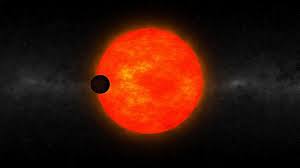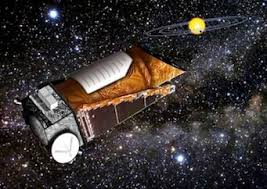Overview
Astronomers have observed planets orbiting other stars in the Milky Way galaxy and in other galaxies. Some of these objects are below the mass of Earth, while others are larger than the planet Jupiter. Over 1900 extrasolar planets are registered, many found by telescopes in space, such as the Kepler Space Mission.
Definition of a Planet
Planets were officially defined in 2003 by the International Astronomical Union, partly because of the controversy around the status of Pluto, Eris, and other objects within the Solar System. Since astronomers were observing planetary bodies around other stars, they accommodated extrasolar planets in their definition. Planets orbit stars or stellar remnants; they are not large enough to start fusion reactions on their own; and they are not smaller than the smallest planet in the Solar System. This definition is controversial enough, as some objects that have been discovered are estimated larger than the upper limit of 13 times the size of Jupiter. It may take more than huge size within a gaseous body to ignite thermonuclear reactions and turn it into a star, according to scientists who disagree with the IAU’s definition.
Detecting Extrasolar Planets
Some very large planets have been observed directly as faint infrared images orbiting their parent star. Most are detected indirectly, by small variations in the parent star’s brightness or motion. In 1992, rocky planets were seen orbiting a pulsar, discovered by minute variations in the pulse rate of the pulsar. They are theorized to be remnants thrown out of the exploding supernova that created the pulsar, or rocky cores from gas giants destroyed in the explosion.
Hot Jupiters, Super-Earths, and Rogue Planets
Some of the most surprising exoplanets are thought to have the mass of the planet Jupiter but orbit closer to their star than 1 AU, closer than the distance between the Earth and the Sun. They radiate huge amounts of infrared energy, showing that they have high surface temperatures. Other solid planets have been observed that are between 4 and 10 times the size of Earth, nicknamed “Super-Earths” by exoplanet searchers. Some exoplanets do not appear to orbit stars at all. These rogue planets are massive, and may have been ejected from planetary systems as they were formed.
The Kepler Mission
The Kepler Space Telescope was launched in 2009, with a specific mission to search for planets that orbit other stars. It has discovered 1000 confirmed extrasolar planets, with about three times as many unconfirmed. It has a very large camera that is specifically designed to measure the small distances in brightness when planets transit stars. It orbits the Sun in an orbit that takes over 370 days, collecting telemetry as it goes, and transmitting it to scientists on Earth.
Interested in science tutoring services? Learn more about how we are assisting thousands of students each academic year.
SchoolTutoring Academy is the premier educational services company for K-12 and college students. We offer tutoring programs for students in K-12, AP classes, and college. To learn more about how we help parents and students in Baltimore, MD: visit Tutoring in Baltimore, MD




